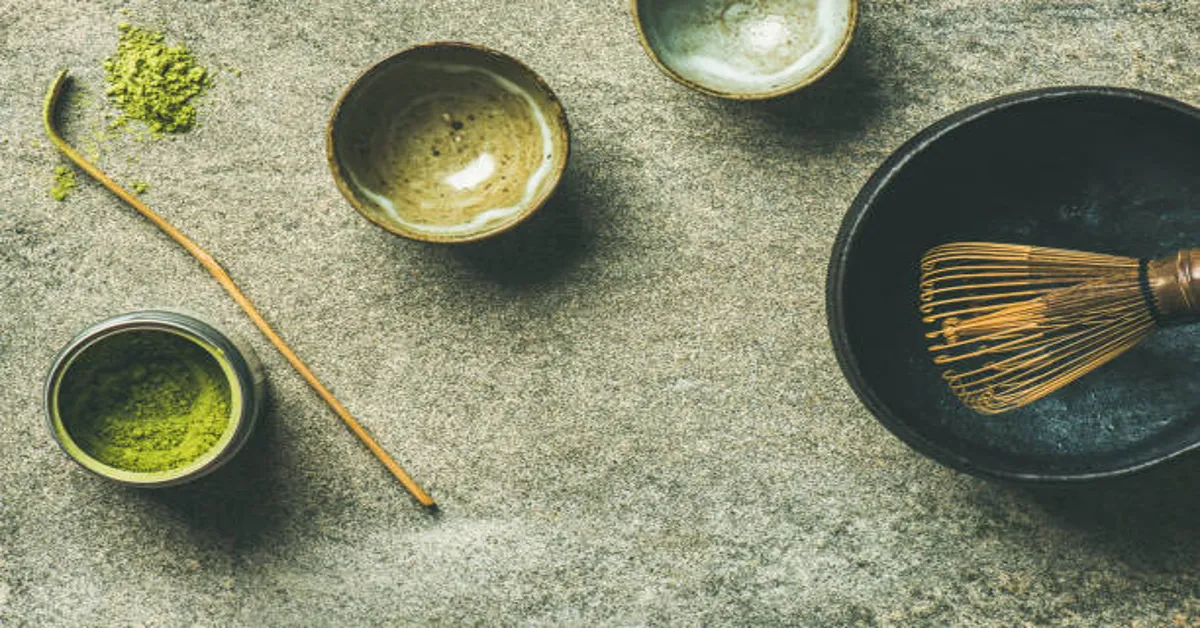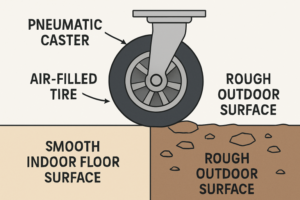Matcha, a finely ground powder made from shade-grown green tea leaves, has traveled across centuries from ancient Japanese tea ceremonies into modern kitchens and cafés worldwide. While many people encounter matcha for the first time in the form of a latte or smoothie, those who wish to prepare it authentically at home often discover the importance of having the right tools. This is where a matcha kit comes into play.
A matcha kit is not simply a bundle of utensils; it represents a complete experience that blends tradition, mindfulness, and health. Each component is carefully designed to enhance the preparation of matcha, ensuring that the powder whisks smoothly, the foam forms correctly, and the flavor profile is respected. For enthusiasts and beginners alike, owning a kit is the gateway to transforming matcha from a beverage into a ritual.
What Is a Matcha Kit?
A matcha kit is a collection of specialized tools used to prepare matcha tea. While modern variations exist, most authentic kits include four or more traditional items rooted in Japanese tea culture. Unlike standard tea preparation, where one simply steeps leaves in hot water, matcha is whisked directly into the water, creating a vibrant green drink with a distinctive frothy surface. The kit ensures this process is both functional and aesthetically pleasing.
Typical Components in a Matcha Kit
| Tool Name | Japanese Term | Purpose | Notes |
|---|---|---|---|
| Bamboo Whisk | Chasen | Used to whisk matcha powder with water to create froth | Usually handmade with 80–120 prongs |
| Matcha Bowl | Chawan | Wide bowl that allows whisking without spilling | Ceramic or clay, often handcrafted |
| Bamboo Scoop | Chashaku | Measures matcha powder | Curved design for precision |
| Whisk Holder | Kusenaoshi | Maintains whisk shape | Extends whisk’s lifespan |
| Sifter | Furui | Breaks up clumps of powder | Ensures smooth tea |
| Tea Cloth | Chakin | Used for cleaning utensils | Often made from linen or cotton |
| Storage Container | Natsume or Chaire | Holds matcha powder | Keeps tea fresh and moisture-free |
While some modern kits replace or simplify certain items, the essence remains the same: a curated collection that allows one to engage in both the art and practicality of matcha making.
The History and Cultural Significance
Matcha preparation has deep ties to Zen Buddhism and Japanese culture. Monks in the 12th century brought powdered tea from China to Japan, where it evolved into an integral part of meditation rituals. The Japanese tea ceremony (chanoyu), codified in the 16th century, elevated matcha preparation into an art form, emphasizing harmony, respect, purity, and tranquility.
The matcha kit, in this context, was more than a set of tools; it symbolized mindfulness and discipline. Every whisk stroke, every scoop, and every cleaning step carried significance. Modern matcha kits preserve this heritage while making it accessible for daily use.
Why Use a Matcha Kit Instead of Regular Tools?
At first glance, one may wonder if a simple spoon and cup could replace the specialized kit. The difference lies in function, results, and experience.
- Texture and Froth
Matcha requires a fine foam for proper taste. A bamboo whisk, with its carefully designed prongs, traps air and emulsifies powder with water better than a metal whisk or spoon. - Flavor Release
Proper whisking enhances the umami-rich flavor of matcha while balancing its natural bitterness. - Mindful Preparation
Preparing matcha with a kit slows down the process, turning it into a calming ritual. - Preserving Tradition
The tools themselves carry historical weight and aesthetic beauty, something unmatched by ordinary kitchen utensils.
Types of Matcha Kits
Not all kits are the same. Depending on the user’s needs, matcha kits are available in several variations.
1. Basic Starter Kits
Includes essentials like a whisk, scoop, and bowl. Best for beginners.
2. Traditional Full Kits
Contains all traditional tools including sifter, whisk holder, and cloth. Ideal for those who value authenticity.
3. Modern Minimalist Kits
Feature stainless-steel sifters, glass bowls, or electric whisks. Designed for convenience while retaining core functionality.
4. Travel-Friendly Kits
Compact kits with smaller whisks and portable containers for those who enjoy matcha on the go.
| Kit Type | Contents | Best Suited For |
|---|---|---|
| Basic Starter | Whisk, Scoop, Bowl | Beginners |
| Traditional Full | Whisk, Scoop, Bowl, Sifter, Cloth, Holder | Enthusiasts, ceremonial use |
| Modern Minimalist | Glass Bowl, Electric Whisk, Scoop | Casual users, fast prep |
| Travel Kit | Mini whisk, small bowl, container | Travelers, office use |
How to Use a Matcha Kit
Step 1: Warm the Bowl and Whisk
Pour hot water into the chawan to warm it, then discard. This prevents temperature shock and protects the ceramic. Soak the whisk tips briefly to soften bamboo.
Step 2: Sift the Powder
Use the furui (sifter) to remove clumps. This ensures smooth blending.
Step 3: Measure with Chashaku
Scoop 1–2 portions of matcha (about 2 grams each) into the bowl.
Step 4: Add Hot Water
Pour water heated to around 70–80°C (158–176°F). Avoid boiling water to preserve flavor.
Step 5: Whisk
Using the chasen, whisk in a rapid “M” or “W” motion until frothy. The foam should be smooth with small bubbles.
Step 6: Enjoy
Sip directly from the bowl, appreciating the texture and flavor.
Health Benefits of Preparing Matcha with a Kit
While matcha itself is known for high antioxidants, vitamins, and calming L-theanine, the process of preparing it with a kit offers psychological and lifestyle benefits too.
- Enhanced Antioxidant Intake – Proper whisking ensures full suspension of powder in water, maximizing nutritional value.
- Mindful Rituals Reduce Stress – The step-by-step process promotes mindfulness and relaxation.
- Improved Digestion and Absorption – Finer frothing aids in better assimilation of nutrients.
- Cultural Enrichment – Engaging with authentic traditions fosters appreciation and respect for cultural heritage.
Choosing the Right Matcha Kit
When selecting a kit, consider:
- Purpose: Daily casual use vs. ceremonial authenticity.
- Material Quality: Handcrafted bamboo whisks last longer than machine-made ones.
- Aesthetic Preferences: Ceramic bowls vs. glass or minimalist options.
- Budget: Kits range from affordable starter sets to premium artisanal collections.
Price Ranges
| Kit Type | Price Range | Notes |
|---|---|---|
| Basic | $20–$40 | Great for beginners |
| Traditional | $50–$120 | Authentic craftsmanship |
| Premium Artisanal | $150+ | Handmade, collectible |
| Modern Electric | $30–$70 | Convenience-oriented |
Maintenance and Care
Owning a kit comes with the responsibility of proper care:
- Whisk (Chasen): Rinse gently under warm water, avoid soap, and store on a whisk holder.
- Bowl (Chawan): Hand wash to avoid cracks.
- Scoop (Chashaku): Wipe clean, keep away from moisture.
- Storage Container: Keep airtight to protect matcha from light and humidity.
Neglecting care can lead to mold, loss of shape, and reduced lifespan of tools.
Integrating Matcha Kits into Modern Lifestyles
The beauty of a matcha kit lies in its adaptability. It can serve traditional tea ceremonies, casual morning routines, or modern culinary experiments. Many people now use matcha kits not only for tea but also for preparing matcha lattes, desserts, and even skincare recipes. This versatility ensures that matcha kits remain relevant in contemporary kitchens worldwide.
Common Mistakes to Avoid
- Using boiling water, which burns the powder.
- Skipping the sifting step, leading to clumpy tea.
- Whisking incorrectly (circular instead of zigzag).
- Storing matcha in open containers, reducing freshness.
- Neglecting whisk care, which causes splitting or mold.
Conclusion
A matcha kit is more than a collection of tools—it is an invitation to engage in a centuries-old tradition, to savor mindful preparation, and to enjoy the health and cultural benefits of matcha in its most authentic form. Whether you are a beginner exploring matcha for the first time or an enthusiast seeking the full ceremonial experience, the right kit enhances not just your tea but your lifestyle. By investing in quality tools, practicing proper techniques, and caring for each component, you transform a simple drink into a ritual of wellness and connection.
ALSO READ: Bondres: A Cultural, Spiritual, and Artistic Expression of Bali
FAQs
1. Do I need a full matcha kit to make matcha?
Not necessarily. While you can use substitutes, a proper kit enhances flavor, texture, and the overall experience.
2. How long does a bamboo whisk last?
With proper care, a chasen can last 3–6 months if used daily, or longer with occasional use.
3. Can I use an electric frother instead of a bamboo whisk?
Yes, though it won’t replicate the traditional texture or ritual. Electric frothers are convenient but less authentic.
4. Is a matcha kit suitable for beginners?
Absolutely. Starter kits are designed for newcomers, making matcha preparation simple and enjoyable.
5. What is the difference between ceremonial and culinary matcha in a kit?
Ceremonial matcha is used for drinking and has a smoother flavor, while culinary grade is better for recipes.









